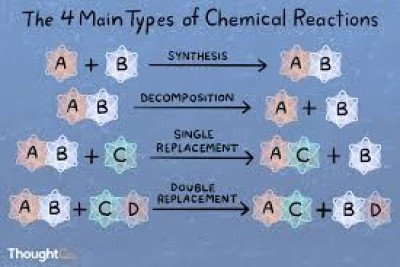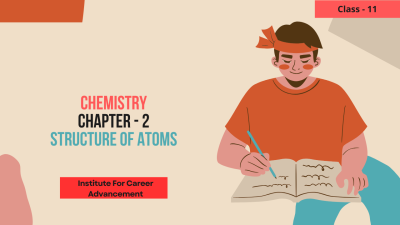Course description
Get ready to delve into the captivating world of organic chemistry in Class 12! This course focuses on three essential functional groups: alcohols, phenols, and ethers. By understanding their structure, properties, reactions, and applications, you'll gain a strong foundation for further exploration in this fascinating field.
The Power of a Hydroxyl Group:
The story begins with the hydroxyl group (OH) – a combination of oxygen and hydrogen. When this group replaces a hydrogen atom in a hydrocarbon molecule, it creates a new type of organic compound.
Alcohols: When the OH group attaches to a saturated carbon atom (single bonds between carbon atoms) in a hydrocarbon chain, an alcohol is born. Imagine introducing an OH group into a molecule like methane (CH₄) or butane (C₄H₁₀). The presence of the OH group significantly influences the properties of alcohols compared to their parent hydrocarbons.
Phenols: A special type of aromatic alcohol arises when the OH group directly bonds to a benzene ring (a six-membered carbon ring with alternating single and double bonds). Phenol is the prime example, where the OH group is attached to the benzene ring.
Beyond the Hydroxyl Group: Ethers Take the Stage
Ethers introduce a different twist. Here, an oxygen atom bridges two carbon atoms, each from separate hydrocarbon chains. Imagine taking two hydrocarbon chains and replacing a hydrogen atom from each with a single oxygen atom that binds them together. This unique structure sets ethers apart from alcohols and phenols.
Exploring Their Properties:
The presence of the functional groups significantly influences the physical and chemical properties of these compounds. You'll explore factors like:
- Boiling point and melting point: The presence of the OH group in alcohols and phenols enables hydrogen bonding, leading to higher boiling and melting points compared to ethers.
- Solubility: Alcohols and phenols are generally more soluble in water due to hydrogen bonding, while ethers can be less soluble depending on the size of the hydrocarbon chains.
- Acidity: Phenols are more acidic than alcohols due to the stability of the phenoxide ion formed after losing a proton (H⁺).
- Reactivity: All three functional groups exhibit various reactions, including substitution, dehydration, and esterification (for alcohols).
A World of Applications:
Understanding these compounds goes beyond theory. They have diverse applications in various fields:
- Alcohols: Used in beverages, fuels, antifreeze, and as solvents.
- Phenols: Found in disinfectants, plastics, and even some medications (aspirin).
- Ethers: Employed as anesthetics, solvents, and even in some fragrances.
দ্বাদশ শ্রেণীতে জৈব রসায়নের চিত্তাকর্ষক জগতে প্রবেশের জন্য প্রস্তুত হোন! এই কোর্সটি তিনটি প্রয়োজনীয় কার্যকরী গোষ্ঠীর উপর দৃষ্টি নিবদ্ধ করেঃ অ্যালকোহল, ফেনোল এবং ইথার। তাদের গঠন, বৈশিষ্ট্য, প্রতিক্রিয়া এবং প্রয়োগগুলি বোঝার মাধ্যমে, আপনি এই আকর্ষণীয় ক্ষেত্রে আরও অনুসন্ধানের জন্য একটি শক্তিশালী ভিত্তি অর্জন করবেন।
হাইড্রক্সিল গ্রুপের শক্তিঃ
গল্পটি হাইড্রক্সিল গ্রুপ (ওএইচ) দিয়ে শুরু হয়-অক্সিজেন এবং হাইড্রোজেনের সংমিশ্রণ। যখন এই গ্রুপটি হাইড্রোকার্বন অণুতে একটি হাইড্রোজেন পরমাণু প্রতিস্থাপন করে, তখন এটি একটি নতুন ধরনের জৈব যৌগ তৈরি করে।
অ্যালকোহলঃ যখন OH গ্রুপ একটি হাইড্রোকার্বন শৃঙ্খলে একটি স্যাচুরেটেড কার্বন পরমাণুর (কার্বন পরমাণুর মধ্যে একক বন্ধন) সাথে সংযুক্ত হয়, তখন একটি অ্যালকোহলের জন্ম হয়। মিথেন (CH4) বা বিউটেন (C4H10)-এর মতো অণুর মধ্যে একটি OH গ্রুপ প্রবর্তনের কথা কল্পনা করুন। ও. এইচ গ্রুপের উপস্থিতি তাদের মূল হাইড্রোকার্বনের তুলনায় অ্যালকোহলের বৈশিষ্ট্যগুলিকে উল্লেখযোগ্যভাবে প্রভাবিত করে।
ফেনলঃ একটি বিশেষ ধরনের সুগন্ধযুক্ত অ্যালকোহল উৎপন্ন হয় যখন ওএইচ গ্রুপ সরাসরি একটি বেনজিন বলয়ের সাথে আবদ্ধ হয়। (a six-membered carbon ring with alternating single and double bonds). ফেনল হল প্রধান উদাহরণ, যেখানে ও. এইচ গ্রুপ বেনজিন বলয়ের সাথে সংযুক্ত থাকে।
হাইড্রক্সিল গ্রুপের বাইরেঃ ইথারগুলি পর্যায় নেয়
ইথার একটি ভিন্ন মোড় নিয়ে আসে। এখানে, একটি অক্সিজেন পরমাণু দুটি কার্বন পরমাণুকে পৃথক হাইড্রোকার্বন শৃঙ্খল থেকে সংযুক্ত করে। কল্পনা করুন দুটি হাইড্রোকার্বন চেইন নিয়ে এবং প্রতিটি থেকে একটি হাইড্রোজেন পরমাণু প্রতিস্থাপন করে একটি একক অক্সিজেন পরমাণু দিয়ে যা তাদের একত্রিত করে। এই অনন্য কাঠামো ইথারকে অ্যালকোহল এবং ফেনল থেকে আলাদা করে।
তাদের বৈশিষ্ট্য অন্বেষণ করাঃ
কার্যকরী গোষ্ঠীর উপস্থিতি এই যৌগগুলির ভৌত ও রাসায়নিক বৈশিষ্ট্যগুলিকে উল্লেখযোগ্যভাবে প্রভাবিত করে। আপনি নিম্নলিখিত বিষয়গুলি অন্বেষণ করবেনঃ
বয়লিং পয়েন্ট এবং গলনাঙ্কঃ অ্যালকোহল এবং ফেনলে ওএইচ গ্রুপের উপস্থিতি হাইড্রোজেন বন্ধনকে সক্ষম করে, যার ফলে ইথারের তুলনায় উচ্চতর বয়লিং এবং গলনাঙ্ক হয়।
দ্রবণীয়তাঃ হাইড্রোজেন বন্ধনের কারণে অ্যালকোহল এবং ফেনল সাধারণত জলে বেশি দ্রবণীয় হয়, অন্যদিকে হাইড্রোকার্বন চেইনের আকারের উপর নির্ভর করে ইথারগুলি কম দ্রবণীয় হতে পারে।
অ্যাসিডিটিঃ একটি প্রোটন (এইচ +) হারানোর পরে গঠিত ফেনক্সাইড আয়নটির স্থায়িত্বের কারণে ফেনলগুলি অ্যালকোহলের চেয়ে বেশি অ্যাসিডযুক্ত।
প্রতিক্রিয়াশীলতাঃ তিনটি কার্যকরী গোষ্ঠীই প্রতিস্থাপন, ডিহাইড্রেশন এবং এস্টেরিফিকেশন সহ বিভিন্ন প্রতিক্রিয়া প্রদর্শন করে। (for alcohols).
অ্যাপ্লিকেশনের বিশ্বঃ
এই যৌগগুলি বোঝা তত্ত্বের বাইরে। বিভিন্ন ক্ষেত্রে এগুলির বিভিন্ন প্রয়োগ রয়েছেঃ
অ্যালকোহলঃ পানীয়, জ্বালানি, অ্যান্টিফ্রিজ এবং দ্রাবক হিসাবে ব্যবহৃত হয়।
ফেনলঃ জীবাণুনাশক, প্লাস্টিক এবং এমনকি কিছু ওষুধে পাওয়া যায়। (aspirin).
ইথারঃ অ্যানেস্থেটিক্স, দ্রাবক এবং এমনকি কিছু সুগন্ধেও ব্যবহৃত হয়।



















